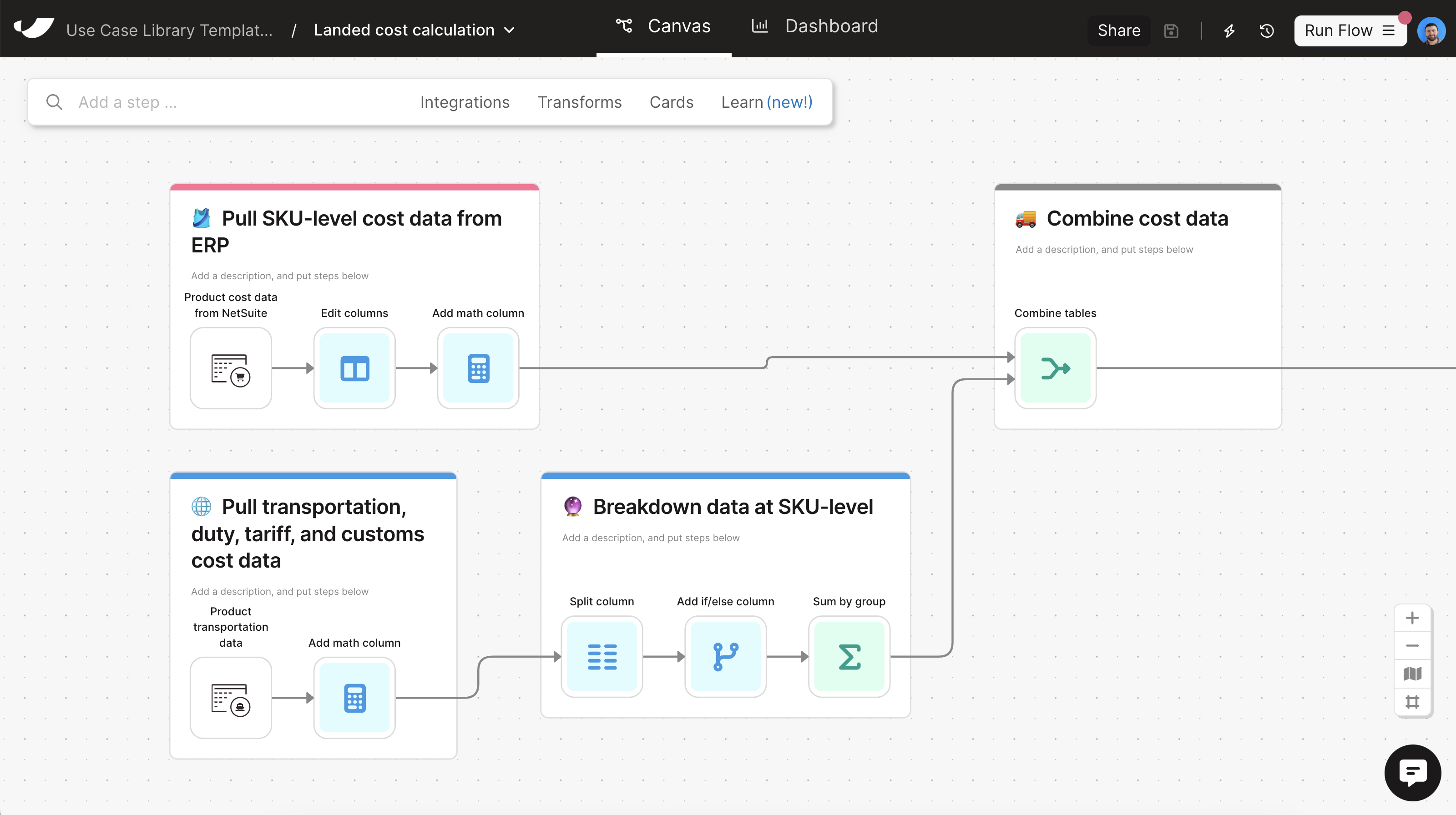
How to calculate landed cost
Understanding your true landed cost per SKU is critical for setting accurate pricing, identifying margin improvement opportunities, and negotiating better supplier and logistics rates. However, landed cost calculations often require consolidating and standardizing cost data from tons of hard-to-access data sources including freight and supplier invoices, costed BOMs, duties, and tariffs. As a result, this critical metric often lives in a convoluted spreadsheet that's a headache to update.
Parabola automates SKU-level landed cost calculations by standardizing and consolidating expenses across your supply chain. By combining information from freight invoice PDFs with data from suppliers and your ERP, you can dynamically calculate landed costs while ensuring accurate, real-time visibility into cost drivers across shipments and products.

Video overview
Why Parabola







The ops team has become so dependent on Parabola—it has helped our workflow a lot.
What is landed cost?
A product's landed cost is the total cost of getting a product to its final destination, factoring in all associated expenses such as product costs, freight, duties, taxes, and handling fees. By breaking these costs down by SKU, businesses gain visibility into cost structures, enabling better pricing strategies and uncovering cost-saving opportunities.
How to calculate landed cost in Parabola?
- Extract freight invoice data: Use the Pull from inbound email or Pull from PDF file step to extract charges from freight invoices. Configure the AI-enabled step to extract key costs like shipping fees, fuel surcharges, and accessorial fees.
- Import supplier invoices: Pull supplier invoices from CSVs, email attachments, and/or API connections to retrieve product costs using steps like Pull from API.
- Retrieve additional landed cost inputs: Bring in duties, tariffs, and customs fees using steps like Pull from Excel file.
- Standardize and clean data: Use steps like Edit columns, Filter rows, Add math column, and Format dates to normalize cost and date formats, SKU names, and currency conversions.
- Join cost data: Use the Combine tables step to merge freight, supplier, and duty data by identifiers like SKU and shipment ID.
- Calculate total landed cost per SKU: Use an Add math column step to sum all associated costs and Sum by group to roll up costs.
- Generate a real-time reporting dashboard: Create a dynamic landed cost dashboard using the Visualize step, or export data using steps like Send to Google Sheets or Email a file attachment.
Tips for accurate landed cost calculations?
- Standardize SKU values and supplier names early using Extract with AI and Standardize with AI to ensure proper joins across datasets.
- Account for fluctuating costs such as fuel surcharges and currency conversions by integrating external data sources dynamically.
- Use a Visualize step to monitor trends in landed costs over time, helping identify cost-saving opportunities with carriers and suppliers.
- Automate notifications for cost anomalies by setting up an Email a file attachment step when a SKU’s landed cost exceeds a threshold.
What other resources are available on landed cost calculation?
- To start building your landed cost calculation Flow, check out Parabola University.
What's a real-world example of landed cost calculation automation?
The Caraway team has been using Parabola for eight months — and in that time, they’ve managed to implement: landed cost automation, automated end-of-month reporting, pre-transit monitoring, and an inventory position dashboard.







